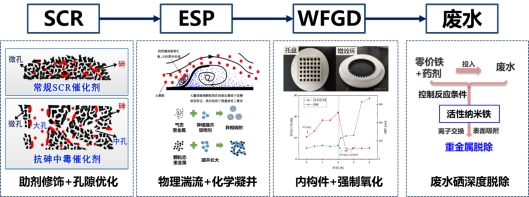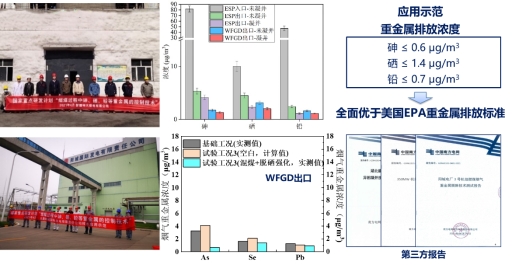Coal is the main primary energy source in China. Clean and efficient utilization of coal has been a major strategic demand of the country and will remain the ballast stone to ensure a safe and stable supply of energy for a long time. Arsenic, selenium, lead and other heavy metals emitted by coal combustion are large and highly toxic, which not only endangers the health, but also brings potential risks to the capture, utilization and storage of carbon dioxide.

Developed countries have set limits on the emission of heavy metals. In 2016, the US EPA revised the emission standards for arsenic, selenium, lead and other heavy metals in coal-fired power plants. Its power plants mainly reach the standards through coal-type control and washing technologies.

China has a large amount of steam coal and many kinds of coal higher than the average value of heavy metals covering nine major coal-producing areas. The existing heavy metal control strategy is not suitable for our situation. China's ultra-low emission control of SO2, NOx and particulate matter from coal-fired power plants has led the world, but it lacks standards and supporting technologies for controlling heavy metals such as arsenic, selenium and lead.

The project team led by Professor Yao Hong, Professor Luo Guangqian, and Professor Hu Hongyun found that the different forms of heavy metals in the combustion process led to poor universality of the chemical reaction control interval, and the mass concentration distribution of arsenic, lead and selenium was inconsistent with that of soot after enrichment in fine particles. As a result, the ultra-low emission control technology and device in the power plant could not effectively cooperate to control heavy metals. In addition, after the volatile selenium compounds escape from the dust removal equipment, some of them migrate to the desulfurization solution and cause secondary pollution, and some of them even directly discharge into the atmosphere in gaseous form. These bottlenecks pose a great challenge to the development of heavy metal emission control technology in coal power plants, and it is urgent to carry out technology research and development for typical and high heavy metal coal types. This work innovatively breaks through the bottleneck of heavy metal emission control in Chinese coal-fired power plants by inhibiting the generation of gaseous heavy metals, strengthening the collaborative collection of heavy metals by existing devices, controlling the fine particles of heavy metals that are easy to escape, and improving the stability of heavy metals. The key control technologies are formed according to the content of heavy metals in coal and the migration difference in the combustion process.




